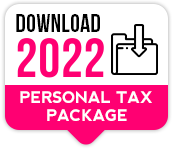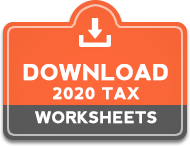
There are new rules this tax season, courtesy of COVID-19. Here’s what you need to know
March 1, 2021
Pattie Lovett-Reid: Don’t even think about trying to outsmart Canada Revenue Agency
March 23, 2021As the devastating economic consequences of the novel coronavirus pandemic started to emerge, the Bank of Canada hurriedly pushed through cuts to its key policy interest rate (the overnight rate) to bring the rate down to 0.25%, which is essentially the lowest it can go. With much of the country still in various states of lockdown, these macroeconomic conditions persist and rates continue to be held at near zero levels.
The overnight rate drives the Prime rate, which is the rate against which most variable-rate mortgages are pegged. The Prime rate dropped suddenly from 3.95% at the beginning of 2020 to 2.45% in the spring of 2020, where it remains today. More broadly, changes in the Bank of Canada’s benchmark rates have an impact on interest rates throughout the Canadian financial system. Accordingly, mortgage rates (both fixed and variable) have decreased significantly.
In this new ultra-low interest rate world, many borrowers, especially those with fixed-rate mortgages, may be prompted to consider their options. Is now the time to get out of an existing mortgage product to take advantage of lower rates on offer, and what might the penalties be? Even borrowers with variable-rate mortgages may benefit from revisiting the question of whether they are getting the best deal from their mortgage lender.
In this edition of the Canadian Financial Planner, we will discuss issues to consider when deciding whether to break a mortgage contract, as well as some factors to bear in mind when contemplating a change in mortgage product and/or lender. We will also discuss the importance of taking the time to shop around for mortgage rates and whether or not engaging the services of a mortgage broker could be advantageous.
Specifically, we will discuss:
- PART 1: Deciding Whether to Break a Mortgage Contract
- PART 2: Switching to a New Mortgage Lender – Costs to Consider
- PART 3: Fixed-Rate vs. Variable-Rate Mortgages
- PART 4: Mortgage Refinancing – Borrowing on Home Equity
- PART 5: Shopping for a Mortgage
PART 1: Deciding Whether to Break a Mortgage Contract
When trying to quantify the costs involved in breaking a mortgage contract, the borrower first needs to determine whether they have an open or closed mortgage. With an open mortgage, some or all of the mortgage may be repaid at any time without incurring a prepayment penalty. However, if the borrower has a closed mortgage, their lender may not even allow them to break their mortgage agreement during the term. If the financial institution allows the borrower to break the mortgage contract, they will typically require a prepayment charge to be paid, the cost of which can be quite punitive.
For variable rate mortgages the prepayment charge is generally calculated based on 3 times the monthly interest. For fixed rate mortgages the prepayment penalty is typically much higher and is based on the interest rate differential (“IRD”) between the existing mortgage and the rate available today (where the term matches that of the remainder of the existing mortgage).
Unfortunately for borrowers with fixed rate mortgages, in situations when interest rates have declined significantly, prepayment penalties tend to increase substantially, since the IRD increases. Below we illustrate an example of a prepayment charge calculation.
Outstanding mortgage balance: $400,000
Mortgage type: 5 year fixed-rate – 25 year amortization
Number of months left in the term: 36 months (3 years)
Existing annual interest rate: 3.25%
Today’s interest rate for a term of the same length: 2.14%
Difference in interest rates: 3.25% – 2.14% = 1.11%
Monthly interest difference: 1.11% ÷ 12 months = 0.0925%
Estimated prepayment charge (IRD): $400,000 X 0.0925% x 36 months = $13,320
Borrowers who would prefer to avoid number crunching can obtain a written statement from their financial institution quantifying the prepayment charge that would need to be paid.
In the example above, the borrower would have to pay over $13,000 to break their mortgage contract. It should also be noted that the prepayment charge may not be the only cost of breaking the mortgage. Other costs may include administration fees, appraisal charges and/ or legal and other fees associated with mortgage discharge and reregistration.
Given how substantial prepayment penalties can be, open mortgages may appear attractive, since they tend not to incur prepayment charges. This gives borrowers the freedom to renew/ refinance their mortgage and take advantage of lower rates at any time. However, interest rates on open mortgages are typically higher than on closed mortgages. The borrower must pay a price for having this added flexibility. In the current market, open mortgage rates tend to be at least 2% higher than comparable closed mortgage products. As such, they are only really suitable for borrowers that have a specific need for the flexibility (i.e. those that know that they will be paying off a large portion of their mortgage in the near future).
Minimizing prepayment charges
One common way of minimizing prepayment charges is to take advantage of any prepayment privileges that might be built into the mortgage agreement. Prepayment privileges are terms in a mortgage agreement that allow the borrower to make lump sum payments on top of their regular payments without triggering a prepayment charge.
In this way the borrower can bring down the balance of the mortgage prior to paying it off in order to reduce the prepayment charge that must be paid. Some lenders have restrictions on making prepayments immediately prior to discharging a mortgage. For example, they may not allow the borrower to make any prepayments within 30 days of the intended discharge date of the mortgage.
In some cases, if the borrower plans to arrange their new mortgage with the same lender, they may be able to get the lender to waive a portion of the fees. Alternatively, in an effort to win a borrower’s
business, some mortgage lenders will offer to cover some or all of the prepayment charges and other costs to help them make the switch from a competitor.
For borrowers that are looking to move to a new home, many financial institutions will allow them to “port” their mortgage to the new home without incurring prepayment charges. However, the mortgage would be transferred to the new property with the same rate and terms as those applied to the previous home.
When might there be a benefit to breaking a mortgage contract?
Given all the discussion about prepayment charges, a borrower might conclude that it is simply too expensive to break their mortgage in order to pursue a better rate. However, even after the prepayment charge has been paid, if we take the example above, there are mortgage rates available that would likely save a borrower at least some money by switching. In each case, the amount of money saved will determine whether refinancing the mortgage is worth the hassle.
There are other possible advantages to breaking a mortgage agreement beyond the quantifiable financial benefit. A borrower’s personal situation may have changed such that they now require a mortgage that better suits their needs. Examples of a change in requirements may include:
- a change in the desired mortgage term;
- a need for additional funds (i.e. access to home equity);
- customer service related concerns (i.e. the current financial institution has provided poor service);
- a desire to change from a fixed to a variablerate mortgage or vice versa; and/ or
- a desire to benefit from more flexible terms, such as prepayment privileges.
Mortgage loan underwriting and stress tests
One concern that should be borne in mind before contemplating whether to break a mortgage contract and refinance elsewhere is whether or not the borrower will still have access to the same amount of capital. Since the pandemic struck, banks and other financial institutions often employ a higher degree of scrutiny when assessing mortgage loan applications, given the extent to which COVID-19 is impacting our economy. Since the pandemic began, unemployment has risen by more than 700,000 in Canada. It is perhaps unsurprising that banks are more cautious.
In addition to skittish banks, borrowers now have to contend with the mortgage stress tests introduced back in 2018; a factor that many borrowers would not have previously had to concern themselves with.
Mortgage stress tests are designed to ensure that borrowers could still afford to make their mortgage payments even if there were an increase in interest rates. To do this, banks verify the ability of the loan
applicant to make their payments at the Bank of Canada qualifying rate (determined based on the average of the posted rates of the 5-year fixed rates from Canada’s big banks).
At present, the qualifying rate is 4.79%, which is considerably higher than current market rates being offered. The manner in which the qualifying rate is determined was due to be updated in April 2020, but the changes were delayed due to COVID-19. Ultimately it is expected that the changes will be adopted when the macroeconomy recovers. In practice, the changes will mean that the stress test will become even more stringent.
PART 2: Switching to a New Mortgage Lender – Costs to Consider
The costs of switching to a new lender depend upon the type of mortgage the borrower has at present and the type of mortgage the borrower is looking to obtain.
Standard charge vs. collateral charge
One key factor relates to whether the current mortgage has a standard charge (sometimes referred to as a traditional or conventional charge), or a collateral charge. When a lender registers a mortgage against a property, this provides them with the right to take possession of the home if the loan is not repaid as scheduled. The mortgage lender’s registered security is also known as a “charge” against the property. A standard charge is registered for the actual amount of the mortgage loan. However, a collateral charge is often registered for an amount in excess of the mortgage. This allows the borrower to obtain a higher loan amount without having to re- register the mortgage. The excess of the collateral charge over the mortgage balance can also be used by the bank as security for other credit offered to the borrower, such as additional loans or revolving lines of credit.
Some lenders register all loans as collateral charges, whereas others register different types of charges depending upon the circumstances. Mortgages with a collateral charge will most likely need to be discharged and re-registered upon switching to a new lender. In this case, a discharge fee will need to be paid, which typically ranges from $200 – $350. In addition, legal fees will need to be paid to register the new mortgage which tends to cost somewhere in the region of $1,000. A mortgage registration fee must also be paid, which is usually around $70, depending on the province/ territory in which the borrower resides. When discharging the old mortgage, all loan agreements secured by the collateral charge will need to be repaid, which may include secondary loans or lines of credit.
Where the existing mortgage has a standard charge registered against it, the mortgage can usually be “assigned” to a new lender. As such, the mortgage typically need not be discharged and re-registered unless the borrower is looking to significantly alter the terms of the mortgage by increasing the amount of the loan or its amortization period, for example. Generally, assignment fees range from a nominal amount to upwards of $350.
Other fees
In some cases, the new mortgage lender will want to confirm the value of the property that is being mortgaged. Appraisal fees tend to run from $350 to $500, depending upon the nature of the property. The new mortgage lender may also require the borrower to pay additional administrative charges and set-up costs. As previously discussed, a prepayment charge may also need to be paid on the old mortgage loan.
Switching mortgage lenders is usually a fairly straight-forward process. The new lender will require the borrower to complete a mortgage application, along with providing proof of property ownership, proof of income and evidence that the property is insured. Finally, the new lender will need to see the renewal statement for the current mortgage or a recent mortgage statement from the existing lender.
PART 3: Fixed-Rate vs. Variable-Rate Mortgages
Variable-rate mortgages are normally pegged to the Prime rate and are typically quoted as being Prime plus or minus a mortgage lender specific spread e.g. “Prime – 0.7%”. Fixed-rate mortgages attract a pre-set rate of interest that does not change over the specified term (normally 1 – 10 years).
As with many personal financial decisions, whether to opt for a fixed or a variable-rate mortgage depends greatly on a person’s individual risk tolerance. Different borrowers are also likely to have differing outlooks on how they expect rates to move over the next few years. The Bank of Canada has set out its views on the medium term outlook for inflation, as follows:
“CPI inflation is forecast to rise temporarily to around 2 percent in the first half of the year, as the base-year effects of price declines at the pandemic’s outset — mostly gasoline — dissipate. Excess supply is expected to weigh on inflation throughout the projection period. As it is absorbed, inflation is expected to return sustainably to the 2 percent target in 2023.”
In other words, the Bank of Canada doesn’t expect inflation to move back up to its target range until 2023. Since the central bank primarily bases its monetary policy decisions on controlling inflation, we should expect to see rate increases as CPI inflation starts to pick up. That being said, no one knows with any certainty what is going to happen to interest rates, not even the Bank of Canada, who themselves acknowledge that there is considerable uncertainty around the outlook. As such, borrowers cannot rely on interest rates being static or predictable. In light of this discussion, we highlight some of the benefits and drawbacks of variable vs. fixed-rate mortgages.
Benefits of variable-rate mortgages
- Historically, variable-rate mortgages have often attracted lower interest rates than those of fixed-rate products
- When the Bank of Canada reduces interest rates, this saving is ultimately passed on to borrowers through an adjustment in the Prime rate
- Variable-rate mortgages are often associated with more flexible prepayment terms than comparable fixed-rate products
- For those borrowers with significant investments in interest bearing securities, variable-rate mortgages offer a natural hedge to offset changes in investment income (i.e. when interest rates fall, the individual will typically earn reduced investment income, but will benefit by incurring lower mortgage interest costs and vice versa when rates rise)
Drawbacks of variable-rate mortgages
- Borrowers have uncertainty over the amount of interest they will pay during the term of their mortgage
- If rates rise substantially, borrowers may struggle to meet their monthly mortgage payments
- The uncertainty presented by a variable-rate mortgage makes it difficult for borrowers to budget household expenses
In summary, borrowers should consider their own attitude to risk when deciding whether to opt for a fixed or a variable-rate mortgage. Borrowers should also carefully assess their ability to meet higher mortgage interest payments if rates go through a sustained period of increases. Online mortgage calculators can help to quantify monthly borrowing costs if rates were to rise substantially.
PART 4: Mortgage Refinancing – Borrowing on Home Equity
Some lenders offer their customers refinancing options. This allows homeowners to access the equity they have built up over time in their properties. The federal government has mandated that borrowers cannot borrow more than 80% of the value of their homes when refinancing. In addition, the federally mandated maximum loan amortization term is 25 years (for a CMHC insured home). CMHC insurance is required on all home purchases with down payments of 20% or less.
As such, borrowers should consider whether there is sufficient equity in their properties to meet the 80% threshold and whether they can afford the higher mortgage payments, especially given the restriction on maximum amortization period.
Options for accessing home equity
There are a number of ways to access home equity when refinancing. Some of the more common options are listed below.
Standard mortgage refinancing
In some cases, borrowers can increase the principal balance of their mortgage. This may involve changing the terms of the original mortgage agreement, including the mortgage rate, type of rate (fixed vs. variable), prepayment options, and/ or the amortization period.
Borrowing amounts previously prepaid
Some lenders will allow customers who previously made lump-sum prepayments to re-borrow these amounts. The amount re-borrowed will be added to the mortgage principal, but may attract a different
rate of interest from the rest of the mortgage.
Home equity lines of credit (“HELOC”)
Similar to a regular line of credit, a HELOC allows borrowers to access a revolving credit facility, but in this case the line of credit is secured against their home. As with other refinancing options, the
maximum loan value of the HELOC combined with the outstanding principal of the regular mortgage is 80% of the property’s appraised value. Further, the HELOC in itself cannot exceed 65% of the value of the borrower’s home.
Second mortgages
A second mortgage is a second loan with a different mortgage lender than the initial mortgage. The second mortgage is also secured against the borrower’s property, but is “subordinate” to the first mortgage in the event of default. This means that the original lender would be paid out from the proceeds of sale during a foreclosure, before the second mortgage lender. Due to the added risk to the second mortgage lender, these mortgages typically attract higher rates of interest.
Costs of refinancing a mortgage
Since refinancing a mortgage normally involves materially altering the terms of the mortgage contract, it usually results in having to discharge the old mortgage and register the new mortgage against the borrower’s property. This means that the borrower will need to pay a mortgage discharge fee, a mortgage registration fee and the legal costs associated with registering the new mortgage (the typical ranges for these costs are set out in PART 2). As with any mortgage refinancing or renewal, prepayment charges and other costs may need to be paid if the borrower is breaking their existing mortgage agreement before the end of the current term.
Mortgage refinancing is a popular method for some borrowers to access additional capital, since it tends to be much cheaper than borrowing on an unsecured basis. Common reasons for borrowing on home equity include consolidating high interest debt, paying for home renovations, or buying a vacation or rental property. When considering mortgage refinancing to consolidate high interest debt, borrowers should note that due to the long amortization period of mortgages relative to other loans, more interest may ultimately be paid. As such, borrowers should consider whether they can budget to pay down their credit card debts sooner, as opposed to adding the balance to their mortgage principal.
PART 5: Shopping for a Mortgage
All federally regulated mortgage lenders, such as banks, are required to provide borrowers with a renewal statement at least 21 days before the end of their existing term. Where the mortgage lender is seeking to continue its relationship with the borrower, mortgage renewal options are often presented along with the renewal notice. This notice slip typically includes a renewal agreement inviting the borrower to indicate which renewal option they would prefer by returning the signed agreement to their financial institution in the envelope provided. While this appears extremely convenient for the borrower, experience suggests that the rates offered are rarely the best rates that the financial institution is able to provide.
Even a quick glance at one of the many mortgage price comparison websites out there makes it clear that shopping around for the best mortgage rate is important. On any given day, there can be a significant difference between the rate on offer from one financial institution versus another. Over the mortgage term, these rate differences can amount to thousands of dollars in savings.
Shopping online
A popular way of shopping for a mortgage these days is to use a mortgage rate comparison website, such as ratehub.ca. Prospective borrowers can then easily compare the mortgage rates currently on offer on the site and then proceed to approach the lender directly (or through a link on the website). One of the potential problems with shopping for a mortgage in this way is that banks and other financial institutions often do not post the best possible rate that a borrower could potentially access.
The rate that a mortgage lender is going to be able to offer will depend on a variety of factors, such as, the borrower’s credit history, the loan-to-value of the mortgage, the borrower’s history as a customer with the financial institution, as well as the borrower’s income and occupation. As such, rate comparison websites may mostly be helpful in establishing the “ballpark” for starting a conversation with a prospective lender, since they are not able to take account of all the various details a lender would likely consider.
Using a mortgage broker
Unlike a bank, a mortgage broker can offer a wider range of mortgage products from a number of different financial institutions. This means that they may be able to access better deals than a mortgage adviser at a bank branch is able to provide. Further, brokers may have access to specialist products that are not readily available in the wider market; this can be especially helpful to borrowers that have poor credit ratings or those that are self-employed with unpredictable sources of income.
Since mortgage brokers build relationships with their clients, they are well positioned to give personalized advice and suggest mortgages that are best suited to their clients’ needs. However, mortgage brokers are paid a commission by the financial institution with which they arrange a mortgage (longer terms tend to earn bigger commissions). As such, individuals should vet any broker that they are considering working with. It may be prudent to ask for details of a broker’s professional background, their years of experience as well as references from other clients.
CONCLUSION
In the current ultra-low interest rate climate resulting from the devastating economic consequences of the pandemic, now might appear to be a good time for many borrowers to examine their options. At the very least, borrowers should consider marking their calendars to give themselves time to shop around when their current mortgage comes up for renewal.
Given the prevalence of online mortgage calculators, borrowers that are locked into their current mortgage may benefit from taking a few minutes to get an estimate of the potential value of breaking their existing mortgage contract. When contemplating renewing or refinancing a mortgage, borrowers should be sure to quantify the costs involved as they can be significant.
Finally, to help borrowers navigate the wide array of products available, both online mortgage rate comparison websites and mortgage brokers can be advantageous. Nonetheless, rate comparison sites often fail to present all of the rates that mortgage lenders are able to offer, especially to longstanding customers with good credit scores. For those looking to use the services of a mortgage broker, care should be taken when choosing to avoid receiving recommendations that are primarily motivated by commissions.







